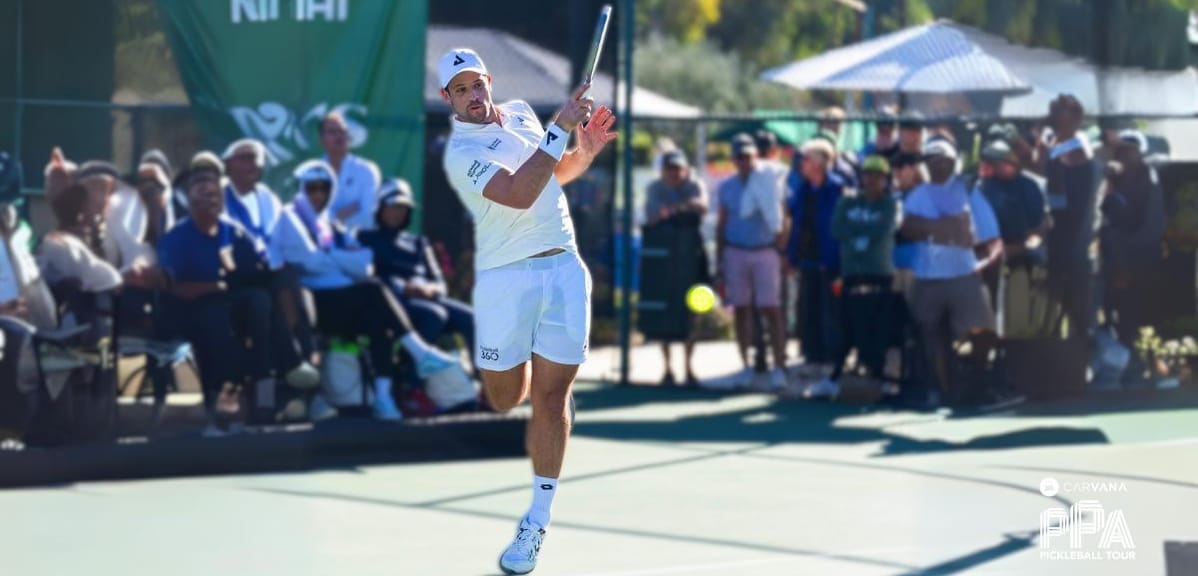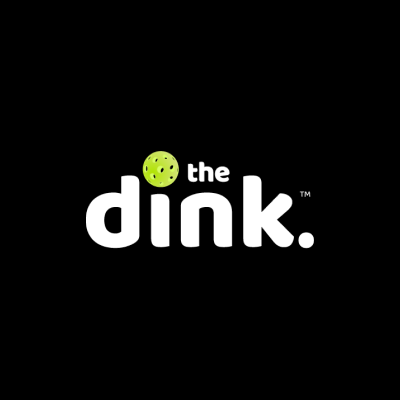
Recently it was announced that the PPA Tour would be implementing provisional changes to the service rules. It seemed as if the new rules were aimed at neutralizing some of the big serves on tour.
Players like Ben Johns, Dekel Bar and Tyson McGuffin are known for serves that would give the average player fits. While most pros have learned to return the serves without issue, it's clear that big serves still offer an advantage even at the highest levels of play. But is it an unfair advantage? Or is it part of the game?
Get your special someone the #1 pickleball gift for Valentine's Day. Now 25% off
Dekel joined the PicklePod this week (click here to subscribe!) to discuss his take on the new serve rules, his body-bagging exchanges with Zane at Desert Ridge and much more.
"I don't think the serve is too much of a weapon. Changing the rule to have the serve be less of a weapon just doesn't make too much sense to me. You lose a bit of athleticism when you force players to hit a certain way. It's nice to see different styles in any sport." – Dekel Bar on this week's PicklePod
Let's catch up on the recent changes to the PPA Tour's service rules:
From Jan 10, 2024 issue of The Dink Newsletter:
Imagine making it to an invitational pro event…only to be told you don’t know how to serve correctly. Yesterday was the preliminary day of PPA Masters play, and refs were spotted giving pro players some pointers in order to maintain a legal serve.
In case you didn’t know, the rules surrounding serves were temporarily changed for The Masters event:
- There is no tossing the ball up on the serve
- The ball must leave the hand in a downward motion
- The ball must leave the hand at or below the top of the hip
From Don Stanley, Director of Officiating, Carvana PPA Tour
"At the prompting of the pro player council, PPA will be beta-testing a new service rule for the pro and senior open brackets. The Palm Springs tournament, (Jan 9-14, 2024) will be used as a test basis for the new service rule. After the tournament has concluded, the results will be reviewed for implementation, revisions or possible deletion. The driving force behind this rule change is to make the serve less of a weapon.
New Rule: “On the serve, (1) the ball must be released with the non-paddle hand, (2) no spin can be imparted on the ball at the time of release, and (3) the release of the ball must be downward and below the top of the hip."
Application: All current serve rules still apply. There will be no re-serves for a questionable release. The release will either be completely legal or the referee will call a fault. Thank you for your help as we test this new service rule."
After the new rules were implemented at The Masters, the PPA reported that the qualifying rounds alone resulted in 72 faults for incorrect serves.
Sign up today for the most informative newsletter in pickleball from The Dink!
It was then announced that the provisional service rules would again be implemented at the Desert Ridge Open. This time around, however, players would be granted one re-serve upon committing their first service fault.
And that brings us to Bar's opinion on the new service rules:
Bar Weighs In
The serve is a shot in pickleball we all love to talk about. What is the purpose of the serve? Are certain serves/service motions legal? Should the serve be used as a weapon?
There have been many rule changes to the serve in the last few years, some to make it easier for people to serve (legalizing the drop serve) and some to make it easier for people to return (getting rid of the spin serve). However, the main issue often circles back to making the serve less of an advantage. But why?
Bigger serves in pickleball mean better third shots, which means all four players make it to the kitchen more often, which makes for more interesting points. Spectators often complain about watching long dink rallies, so encouraging athletes to develop their serves into a weapon leads to a more aggressive and faster paced game, which spectators seem to enjoy more.
In 2023 MLP Premier Level, 97.8 percent of service returns were successful.
In the group stages of the PPA Tour finals in the men’s doubles division, we had four of the biggest servers in the game: Dekel Bar, Tyson Mcguffin, James Ignatowich and Ben Johns. In two of the matches, we had three of those players on the same court. In those two matches, only eight returns were missed out of 248. That’s a bit over three percent. Which means almost 97 percent of returns were returned successfully! This is not a large number of unreturned serves.
In tennis, close to 40 percent of serves are not returned. That is simply a part of the game. While we don’t want to be like tennis and have so many 1-2 shot rallies, we clearly are not! Many of the return errors in Pickleball come from a bad bounce or an unforced error.
Athletes will always try to get the biggest advantage they can, and should be encouraged to do so. You should be rewarded for having a skill.
Enforcing serving rules is difficult, as it is challenging to know exactly where the ball is being struck (Contact point cannot be higher than the naval). Referees often have to make judgment calls, which is obviously not the most accurate measure.
To that I say, let’s help our referees. We can use cameras that we have on the main courts to help have more accurate calls. Players could have the ability to challenge the serve and then refs could have playback capabilities to watch it in slow motion. The kitchen ref could track the serve contact point closely (helping the main ref as there can be no kitchen faults yet). A better/easier highest point of contact could be implemented for the refs to judge: the hip joint?
It is not entirely clear which option is the best and/or most feasible. However, making the serve less of a weapon and taking out the great variety of serves is certainly not the solution. Let’s help create a system that is easier to enforce and showcases our sport in the best way, instead of creating new rules that are harder to enforce and keep up with.

Love Pickleball? Join 100k+ readers for free weekly tips, news & gear deals.
Subscribe to The DinkGet 15% off pickleball gear at Midwest Raquet Sports







